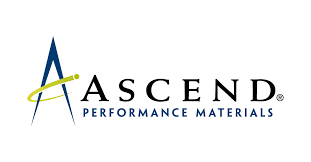 ATW Companies (Warwick, RI) continues to invest in equipment at Parmatech to boost its profile in the metal injection molding business,
ATW Companies (Warwick, RI) continues to invest in equipment at Parmatech to boost its profile in the metal injection molding business,
company officials told PlasticsToday.com in an interview. One goal is to continue expansion in medical and defense markets, which each make up about 40% of the company’s total revenues.
Parmatech, a global pioneer in MIM in the early 1970s and still a leading technology developer, was acquired by ATW from Carpenter Technologies in 2003. In 2009, Parmatech acquired Proform from Morgan Ceramics and in 2010 moved the MIM assets from Massachusetts to a new plant in Rhode Island. “Our goal is to triple sales at the Proform location in 2012 which may move Parmatech from one of the biggest five metal injection molders (in total revenues) in the United States to one of the top three,” says Tracy MacNeal, corporate director of business development at ATW, a privately held company that specializes in engineered metal solutions including MIM, stampings, tubing, laser fabrication, and CNC machining.
Focus on medical and defense
A corporate goal at ATW is to also continue the development of medical and defense segments as two primary pillar markets, says MacNeal, who recently joined the company. She had been Vice President of Business Development for Praxis Technology, a privately held medical devices company. “MIM is a very exciting technology which has now established itself as a mainstream metal fabrication technique,” says Peter C. Frost, ATW president.
“MIM is a good fit and a fast-growing focus for ATW because of growing requirements of medical devices manufacturers for precision, complex metal parts,” says D.J. Lauck, sales manager for Parmatech.
At BIOMEDevice held this week in San Jose, CA, Parmatech showed a variety of orthodontic, orthopedic, and laparoscopic instruments that take advantage of MIM’s cost savings and intricate shape capability. Applications also include sealing and transecting of blood vessels and vein harnessing for bypass surgeries.
MPIF design winner
One of the parts on display was an articulation gear that was a grand prize winner in a design competition held by the Metal Powder Industries Federation (MPIF). The articulation gear’s interrupted gear tooth window eliminates the need for secondary operations, and offers significant savings over machining.
MacNeal says that savings is an example of what’s driving MIM’s growth in the medical industry today.
“Cost pressures are driving a lot of design engineers to consider MIM. Five years ago there was not as strong a focus on cost savings as there is in the healthcare field today,” she says. Hospitals, physicians’ organizations and insurance companies have been reexamining all aspects of their cost structures in an effort to eliminate waste and improve quality. “Use of a net shape process results in a significant reduction in wasted materials compared to traditional machining,” says MacNeal, who estimates that parts made in quantities of at least 10,000 may benefit from MIM. Savings of 30% or more per project are not unusual, she says. Savings for the articulation gear were about 20%.
Production rates for the articulation gear show the capabilities of MIM. More than 10,000 parts per cavity are molded per week. Part weight is 6.1 grams. Lauck says that molds can easily last for more than one million cycles. Flow lengths are fairly long for MIM parts. A bone grafter handle molded by Parmatech is 8.5 inches long with wall thicknesses of 0.25-inch to 0.40-inch wall thickness. Distortion is controlled in the sintering process party through a proprietary binder technology developed by Parmatech. The savings for this part compared to machining are substantial–it can be produced at 30% of what a machined part would cost. A maximum recommended aspect ratio (length to thickness) for a MIM part is 10:1, says Lauck.
Longer-range thinking
“In the past, some companies may have been leery of the cost of a mold, which could be in the $25,000 range,” says Lauck. Today, there is more of a focus on life-cycle cost savings, not just initial part cost. Lauck also feels that more design engineers in the medical device area are more aware of the capabilities of MIM than they were ten or more years ago, another factor fueling growth of MIM as well as ATW’s investments in the technology.
Parmatech holds what is considered the original patent establishing the metal injection molding process, titled “Manufacture of parts from particulate material”. The inventor was Raymond E. Weich Jr., a cofounder of Parmatech. The patent application was filed in 1976 and granted in 1980.
The company was acquired by Carpenter Technology in 1995 when one of the other cofounders retired. Parmatech invested in a custom feedstock mixing unit when it was acquired by ATW in 2003. Parmatech operates 12 molding machines at its Petaluma, CA plant and seven in the Parmatech Proform plant in East Providence, RI. The Petaluma facility is packed with a mix of injection molding brands such as Nissei, Arburg, and Battenfeld. Machines in the new Rhode Island plant are from Wittman Battenfeld. Machines are specially fitted for the MIM process to allow for the aggressive and viscous nature of the powder mixtures. “Plans for expansion in 2012 include adding robots to the machines,” Lauck told PlastcisToday.com
MIM remains a relatively small business compared to plastic injection molding and probably still has more “black magic”, such as custom formulations that can have a dramatic impact on part repeatability and quality. Tool design and debinding processes are also highly specialized areas.
Source : www.plasticstoday.com






